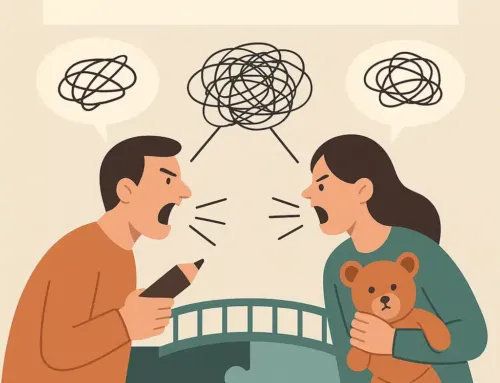
Approx. read time: 8.2 min.
Post: Understanding the 5 Love Languages: How They Shape Relationships and Marriages
Relationships thrive on connection, and one of the most insightful frameworks for understanding how to deepen that connection is Dr. Gary Chapman’s concept of the “Five Love Languages.” These five unique ways of expressing love can enhance intimacy and communication when understood and practiced. Conversely, a lack of awareness of these love languages can lead to miscommunication, unmet needs, and relationship dissatisfaction. This article will explore the Five Love Languages in depth, discuss their impact on relationships, and highlight how knowledge or ignorance of them can transform the dynamics of a marriage or partnership.
What Are the 5 Love Languages?
Dr. Gary Chapman introduced the concept of the five love languages in his book, The Five Love Languages: How to Express Heartfelt Commitment to Your Mate. He explains that individuals have unique preferences for giving and receiving love. By understanding your partner’s preferred love language—and sharing your own—partners can nurture a deeper and more fulfilling connection.
The five love languages are:
- Words of Affirmation
- Acts of Service
- Receiving Gifts
- Quality Time
- Physical Touch
Let’s examine each love language and how they play a role in enhancing relationship dynamics.
1. Words of Affirmation
Description: Words of affirmation involve expressing love through spoken or written words. Compliments, encouragement, kind words, and genuine compliments are essential to individuals whose primary love language is words of affirmation.
How It Impacts Relationships: When one partner values words of affirmation, receiving frequent verbal validation is essential for them to feel appreciated. For example, a simple “I love you” or “I appreciate you” can significantly strengthen the bond. In marriage, consistently affirming your spouse can build emotional security, boosting self-esteem and reinforcing commitment.
Risks of Ignoring This Love Language: If a partner with this love language does not receive affirmation, they may feel undervalued or taken for granted. For instance, partners who are not naturally expressive may underestimate the importance of verbal appreciation. Over time, this lack of recognition can erode trust and intimacy, leaving one partner feeling lonely or unappreciated.
2. Acts of Service
Description: Acts of service revolve around actions taken to help or support a partner. Cooking, cleaning, running errands, or helping with a project are ways individuals who prioritize acts of service feel loved.
How It Impacts Relationships: For those who cherish acts of service, actions speak louder than words. Helping with daily chores or offering a helping hand becomes a meaningful expression of love and dedication. In marriages, when partners understand the importance of acts of service, they often experience less stress and greater harmony, as tasks are shared and burdens are eased.
Risks of Ignoring This Love Language: A lack of assistance or shared responsibility can lead to resentment, especially if one partner consistently feels overburdened. If their spouse doesn’t recognize or reciprocate their efforts, they may feel isolated or unappreciated, potentially leading to frustration and conflict.
3. Receiving Gifts
Description: Receiving gifts is not merely about materialism; it’s about the thoughtfulness and effort behind the gesture. A meaningful or carefully chosen gift can communicate love and consideration in a tangible way.
How It Impacts Relationships: For people who value this love language, gifts serve as physical symbols of affection. In a marriage, regular gestures of giving—be it flowers, a handwritten note, or a small token from a trip—can reinforce the depth of commitment. The act of gift-giving shows thoughtfulness, attentiveness, and an understanding of the partner’s tastes and desires.
Risks of Ignoring This Love Language: Not acknowledging this love language may create feelings of neglect. When gifts are forgotten on important occasions or when the act of giving is dismissed, the partner may feel uncared for. Misinterpreting this language as materialistic can also lead to misunderstandings, causing feelings of disconnect and sadness.
4. Quality Time
Description: Quality time focuses on undivided attention. Individuals who value this love language feel most loved when they can engage meaningfully with their partner without distractions.
How It Impacts Relationships: Spending intentional time together builds a unique intimacy. For instance, date nights, shared hobbies, or simply talking without interruptions fosters a stronger emotional connection. In marriages, prioritizing quality time helps partners understand each other on a deeper level and builds emotional resilience.
Risks of Ignoring This Love Language: When quality time is neglected, it can lead to loneliness or disconnection. Modern distractions, such as excessive screen time or busy schedules, can interfere with this love language. If one partner constantly feels like an afterthought, they may become distant, affecting the overall bond in the marriage.
5. Physical Touch
Description: Physical touch is about expressing affection through physical closeness, such as hugging, kissing, holding hands, or cuddling. For some, it’s an essential way to feel emotionally connected.
How It Impacts Relationships: Physical touch fosters closeness and trust. In marriage, small gestures such as a hug before leaving for work or a kiss goodnight reinforce love. Physical intimacy also strengthens the relationship’s emotional bond, creating a sense of security.
Risks of Ignoring This Love Language: Without sufficient physical contact, a partner whose love language is physical touch may feel unloved or distant. Over time, this lack of physical connection can lead to misunderstandings, detachment, or feelings of rejection, weakening the relationship’s emotional foundation.
The Importance of Knowing and Practicing Love Languages in Relationships
Understanding love languages is a powerful tool in fostering a happy and successful partnership. Here are several ways this knowledge impacts relationships positively:
- Enhanced Communication: Knowing your partner’s love language allows you to communicate in a way that resonates deeply. It encourages each partner to express affection in ways that the other will feel, ensuring that emotional needs are met.
- Reduced Misunderstandings: When partners understand each other’s love languages, they avoid common pitfalls where one person feels unloved despite the other’s efforts. For example, if one partner values quality time while the other prioritizes acts of service, they may initially feel mismatched, but understanding their differences bridges these gaps.
- Strengthened Intimacy: Practicing each other’s love language fosters trust and closeness. Intimacy is built on consistent efforts that make each person feel valued and understood.
- Deeper Appreciation: Love languages encourage couples to appreciate each other’s unique preferences and characteristics. Recognizing and respecting how each partner receives love can strengthen the bond and create a deeper appreciation for each other’s individuality.
- Conflict Resolution: Understanding love languages provides couples with a framework to resolve conflicts by addressing unmet emotional needs. If an argument stems from feeling unloved or unappreciated, identifying the love language can clarify misunderstandings.
Consequences of Not Knowing Love Languages in a Relationship
The absence of understanding love languages can lead to various relationship issues. Here’s how ignoring or misunderstanding them can impact a marriage:
- Emotional Disconnection: When love languages are disregarded, partners may feel misunderstood or disconnected. Over time, this can create emotional distance, as both partners may feel their efforts are unnoticed or undervalued.
- Increased Conflict and Resentment: Miscommunication is a frequent source of relationship conflict. A partner who values physical touch, for instance, may feel neglected if their spouse doesn’t prioritize affection. Without recognizing this underlying need, conflicts may arise and create cycles of frustration.
- Erosion of Trust and Security: Feeling unloved or unsupported can lead to a lack of security in the relationship. Partners may question their importance to each other, undermining trust and commitment.
- Loss of Intimacy: Without knowledge of love languages, intimacy may wane. A lack of effort to engage in each other’s preferred love languages can lead to feelings of loneliness, ultimately affecting emotional and physical intimacy.
- Stagnation of Growth: Successful relationships often involve continual growth and adaptation. Without an understanding of love languages, couples may miss opportunities to evolve together, ultimately hindering the relationship’s potential.
Practical Steps to Discover and Implement Love Languages
For couples eager to improve their relationship, here are practical steps to understand and apply love languages:
- Take the Love Language Quiz: Numerous resources, including online quizzes, can help couples identify their primary love language. Dr. Chapman’s official website offers a free quiz.
- Engage in Open Communication: Once each partner’s love language is identified, openly discuss what each love language means to both of you. Sharing examples of actions that resonate with each language can create a mutual understanding.
- Practice Consistently: Consistency is key. Integrate love languages into daily routines—whether it’s offering compliments, prioritizing time together, or small acts of kindness.
- Be Patient and Observant: Adjusting to a new love language takes time. Partners should practice patience and observation, noting what brings joy to the other person.
- Revisit Regularly: People’s preferences can change over time. Revisiting love languages and checking in on each other’s needs ensures the relationship remains dynamic and responsive.
Conclusion
The concept of the Five Love Languages offers profound insights into what makes relationships flourish. By understanding and practicing love languages, couples can create stronger connections, reduce misunderstandings, and foster long-term happiness. Conversely, neglecting these languages can lead to distance, frustration, and even the breakdown of a relationship. Ultimately, love languages serve as a reminder that everyone experiences love differently, and making an effort to “speak” your partner’s language is an invaluable step towards a healthy, resilient, and joyful partnership.
Understanding the Five Love Languages is not only a gift to your partner but also a powerful tool in cultivating a love that is fulfilling and enduring.
Related Videos:
Related Posts:
Reconnecting with Your Partner Through Ups and Downs in a Marriage or Relationship
Emotional Dependence in Relationships and Marriage: Striking the Right Balance
Cherie White: A Champion for the Bullied and a Voice of Empowerment
Signs a man loves you even if he doesn’t say it
Personality Types of Women in Relationships
Understanding the 5 Stages of Relationship Breakdown: How to Recognize and Navigate the Process









